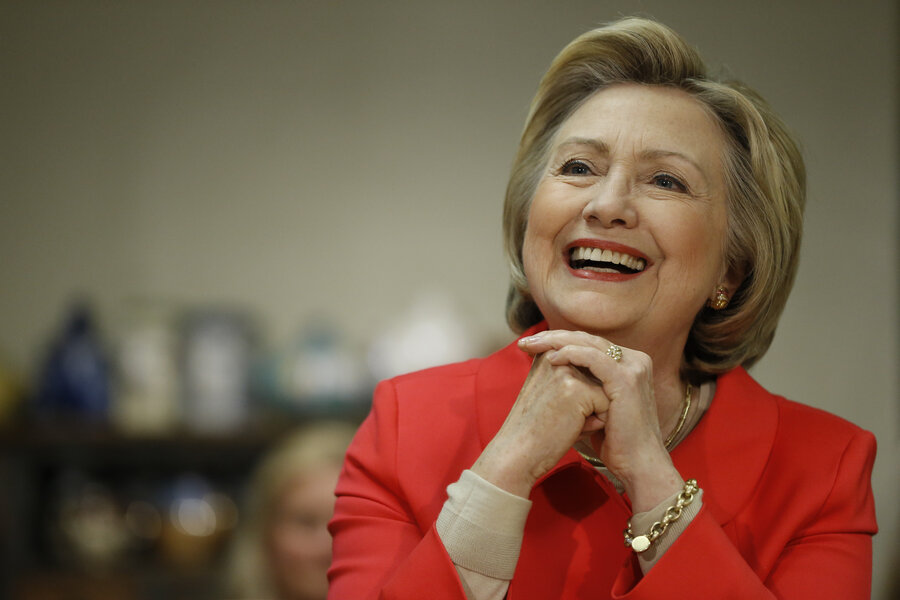Hillary Clinton says half of her cabinet will be female
Loading...
In an MSNBC interview with Rachel Maddow on Monday, Democratic presidential candidate Hillary Clinton said, if she is elected president in November, she plans to have a cabinet that is 50 percent female.
After referencing Canadian Prime Minister Justin Trudeau's campaign pledge to appoint the country's first gender-balanced cabinet, Ms. Maddow asked Ms. Clinton if she planned to make that same pledge.
"Well I am going to have a cabinet that looks like America, and 50 percent of America is women. Right?" Clinton responded. Maddow followed up by asking the presidential candidate if her answer was a "yes," to which Clinton nodded.
If Clinton is elected president of the United States, and she follows through with this promise, it would be a record-breaking moment for women in US politics. Along with the vice president, the cabinet consists of the heads of 15 executive departments. Currently, President Obama has four women in his cabinet: Attorney General Loretta Lynch of the Department of Justice, Secretary Sally Jewell of the Department of the Interior, Secretary Penny Pritzker of the Department of Commerce, and Secretary Sylvia Mathews Burwell of the Department of Health and Human Services.
"Compared to their share of the population, women remain underrepresented at virtually all levels of elected office … [but] survey findings suggest that this is not due to a lack of confidence on the part of the public," Pew Research explained last year. Seventy-five percent of Americans believe that women and men make equally good political leaders, according to Pew. And this confidence is shared essentially equally across party lines: 75 percent of Republicans, 74 percent of Democrats, and 76 percent of independents say men and women are equally qualified for political leadership.
In 2010, Dr. Mona Lena Krook, a political scientist at Rutgers University, and Dr. Diana Z. O'Brien, a political scientist at Indiana University, compared the appointment of female cabinet members and ministers around the world. Dr. Krook and Dr. O’Brien found that a large quantity of female advisers doesn't automatically assure parity as some countries may appoint numerous female aides but designate them to inconsequential positions. Instead, leaders work toward gender parity by not only appointing female aides, but also assigning them to prestigious positions.
"On one hand, a growing list of cabinets now include close to equal numbers of women and men, and more women are assuming nontraditional cabinet roles," explain Krook and O’Brien in their report "All the President's Men? The Appointment of Female Cabinet Members Worldwide." "On the other hand, women's appointments continue to be controversial, leading to criticism or rejection of female nominees, as well as claims by female ministers that they have been excluded from centers of decision-making power."
Frances Perkins, appointed secretary of Labor in 1933 by President Franklin D. Roosevelt, was the first female cabinet member in the US. Another 14 women held cabinet posts over the subsequent decades – under both Republican and Democratic presidents – before President Bill Clinton made history by appointing Secretary of State Madeleine Albright in 1997.
In the 20 years since, women have taken on more and more roles in US cabinets, under both Republican and Democratic leaders. President George W. Bush appointed a total of six female cabinet members during his eight years in office, including Secretary of State Condoleeza Rice, and President Obama has appointed eight, though they did not all serve concurrently.
Minister Trudeau, a self-declared feminist, has said every leader's cabinet should have gender parity. And when asked in November why equal female appointments were so important to him, Trudeau kept it simple: "Because it's 2015."






